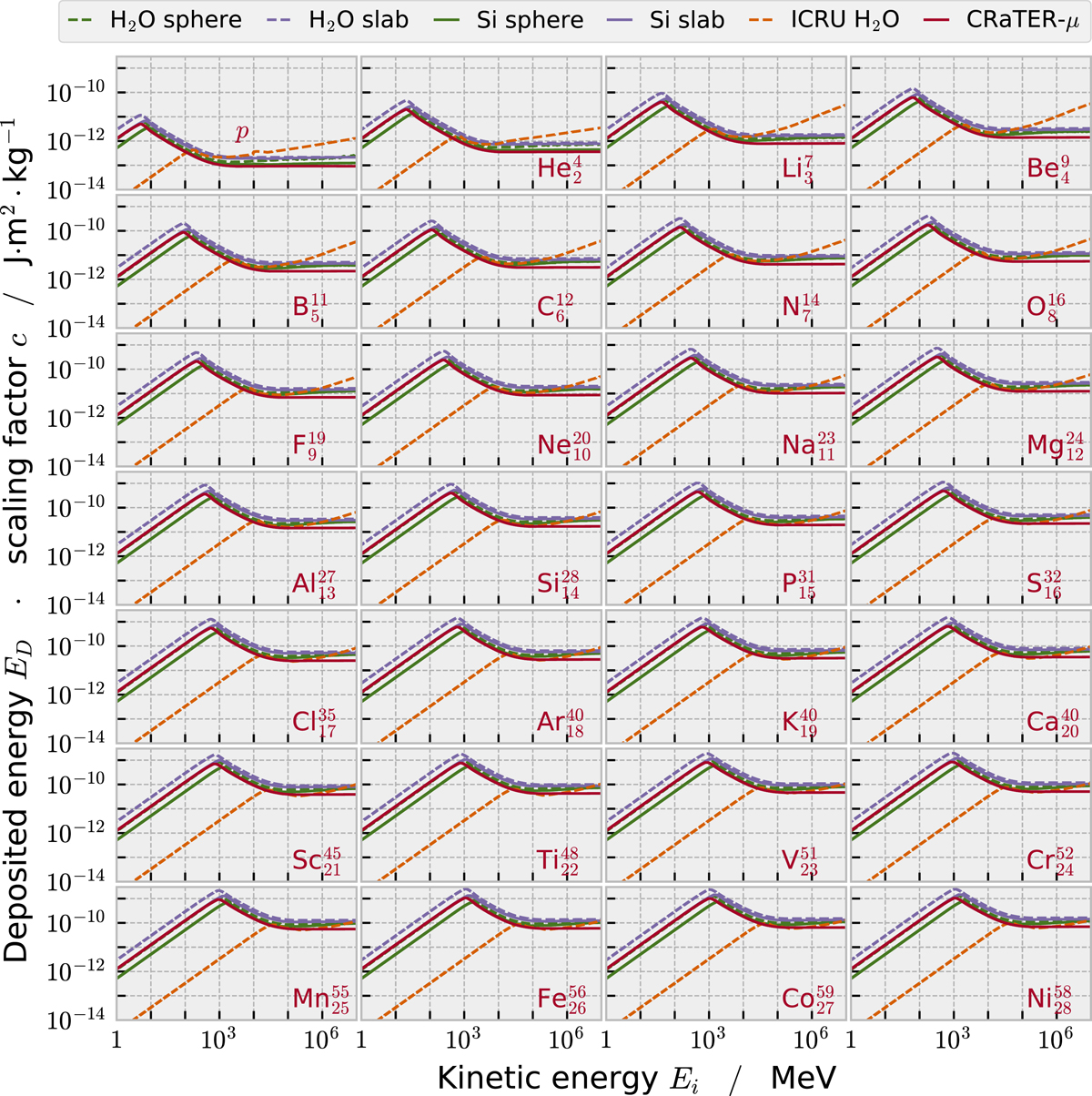Fig. A1

Download original image
Absorbed dose due to heavy particles multiplied by factor C (Eq. (2)) takes in to account the fact that the phantoms have different masses and sizes. After doing so, we can compare the relative differences in absorbed dose rate that different phantoms would suffer if they were placed in to the same radiation field. Full lines correspond to silicon phantoms, while dashed lines are used for H2O phantoms. The different shapes and sizes are indicated with colors. We see that the the relation between phantom size and measured dose has a non trivial dependence on particle type and energy. The calculated data indicates that the silicon phantom suffers a higher absorbed dose than the ICRU phantom for most particle types and energies.
Current usage metrics show cumulative count of Article Views (full-text article views including HTML views, PDF and ePub downloads, according to the available data) and Abstracts Views on Vision4Press platform.
Data correspond to usage on the plateform after 2015. The current usage metrics is available 48-96 hours after online publication and is updated daily on week days.
Initial download of the metrics may take a while.


